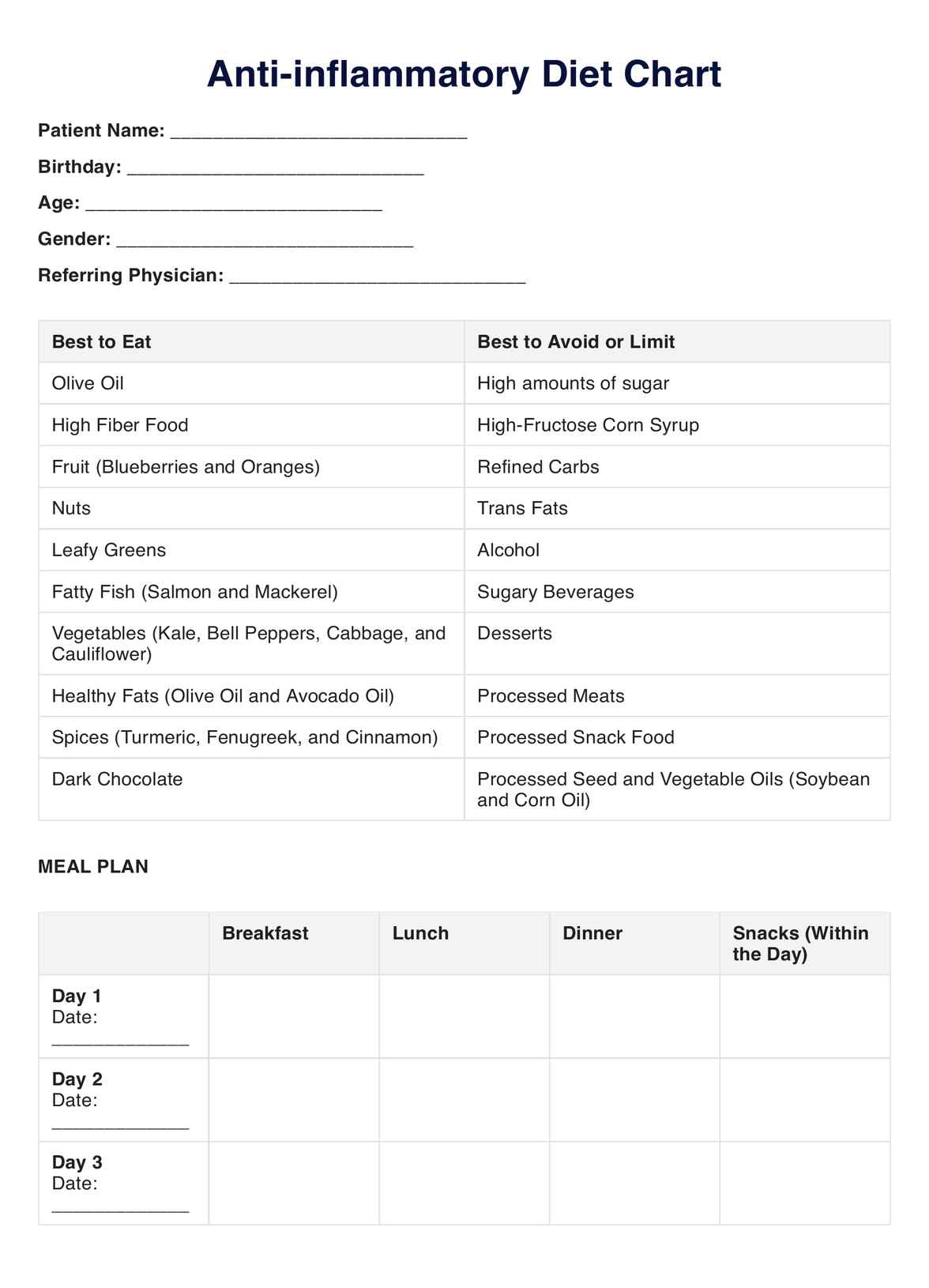Primary care physicians, infectious disease specialists, rheumatologists, and emergency medicine specialists are the ones who typically use an anti-inflammatory diet chart.

Anti-Inflammatory Diet Chart
Help your patient manage their chronic inflammation with the help of an anti-inflammatory diet chart. Click here for a guide and free template.
Use Template
Anti-Inflammatory Diet Chart Template
Commonly asked questions
Anti-inflammatory diet charts are used to assist in managing illnesses brought about by chronic illnesses and food sensitivities.
Ultimately, how an anti-inflammatory diet chart is used heavily depends on the healthcare practitioner and their patient. However, the template can be used in multiple ways, such as an educational resource, reference, and document for a meal plan.
EHR and practice management software
Get started for free
*No credit card required
Free
$0/usd
Unlimited clients
Telehealth
1GB of storage
Client portal text
Automated billing and online payments











